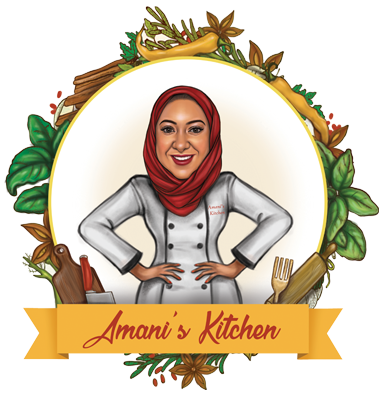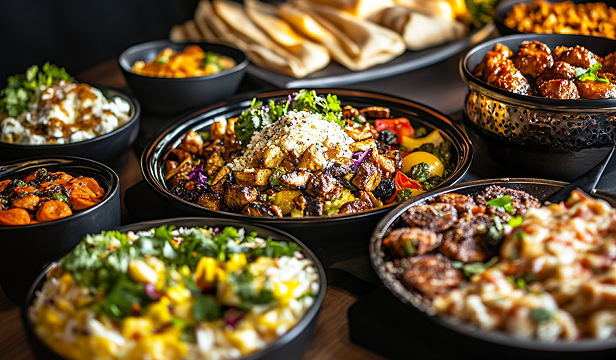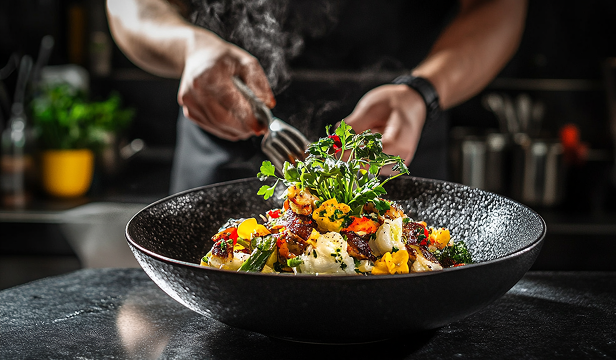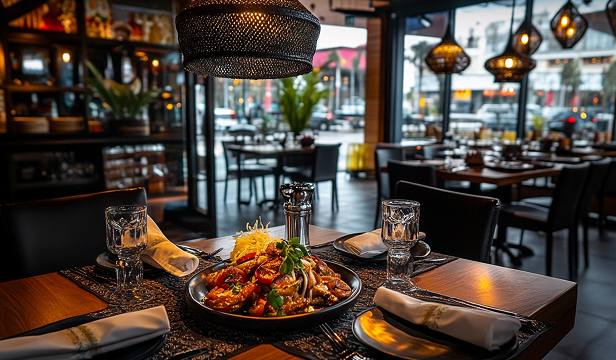Introduction Middle Eastern art is renowned for its intricate patterns, rich colours, and deep cultural…
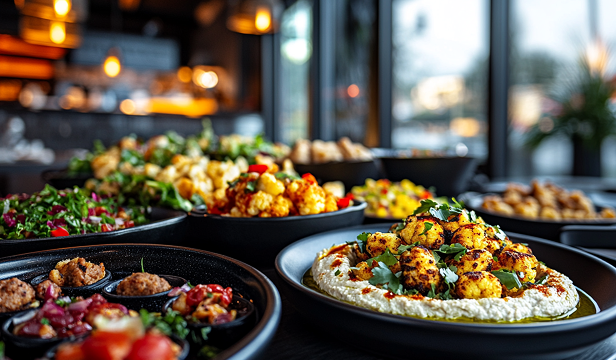
Exploring Arabic Calligraphy in Food Branding and Packaging
Introduction
Arabic calligraphy is a timeless art form that has been deeply embedded in Middle Eastern culture for centuries. Beyond its traditional role in religious texts and architectural design, it has found a modern application in food branding and packaging. The use of Arabic script in packaging not only enhances visual appeal but also strengthens cultural identity and storytelling in culinary branding.
The Aesthetic and Cultural Appeal of Arabic Calligraphy
Arabic calligraphy, with its fluid curves and intricate strokes, provides a distinctive and sophisticated touch to food packaging. The different styles of Arabic calligraphy, such as Kufic, Naskh, Diwani, and Thuluth, each bring a unique aesthetic to branding. Key reasons why brands incorporate Arabic calligraphy into their packaging include:
- Cultural Authenticity: Reinforces the brand’s Middle Eastern heritage.
- Elegance and Sophistication: The artistic nature of calligraphy enhances premium packaging designs.
- Memorability: Unique calligraphic logos and inscriptions create a lasting impression on consumers.
- Emotional Connection: Evokes nostalgia and tradition, fostering consumer loyalty.
Applications in Food Branding and Packaging
Arabic calligraphy can be applied to various aspects of food branding, including:
- Logos and Brand Identity: Many Middle Eastern food brands integrate calligraphy into their logos, making them instantly recognisable and culturally resonant.
- Typography on Packaging: Calligraphic elements enhance label designs, from tea and coffee tins to spice jars and confectionery boxes.
- Product Naming and Slogans: Using calligraphy for product names and slogans adds a touch of authenticity and exclusivity.
- Luxury and Gift Packaging: Premium brands use embossed or foil-stamped Arabic calligraphy to create elegant gift boxes for dates, chocolates, and gourmet items.
- Menu and Promotional Materials: Restaurants and food businesses incorporate calligraphy in their menus, flyers, and advertising materials to reinforce their brand aesthetic.
Successful Examples of Arabic Calligraphy in Food Branding
Several brands have successfully utilised Arabic calligraphy in their branding and packaging to create a strong cultural identity:
- Al Nassma (UAE): The world’s first camel milk chocolate brand uses refined Arabic calligraphy on its packaging, embodying luxury and tradition.
- Zaatar w Zeit (Lebanon): A modern take on Arabic typography in its branding reflects its fusion of contemporary and traditional Middle Eastern cuisine.
- Bateel (Saudi Arabia): Known for its gourmet dates, Bateel incorporates elegant calligraphy into its packaging, exuding sophistication.
- Harrods’ Middle Eastern Product Line: Even Western brands like Harrods have embraced Arabic calligraphy for their Middle Eastern product ranges, highlighting the global appeal of this art form.
Modern Trends and Innovations
With the rise of digital design and sustainability, new trends are emerging in Arabic calligraphy-based food packaging:
- Minimalist Calligraphy: Simple, clean calligraphic designs that blend traditional art with modern minimalism.
- Eco-Friendly Packaging: Using recyclable materials while maintaining the artistic integrity of calligraphic branding.
- Augmented Reality Integration: Brands are exploring interactive packaging where calligraphy elements can trigger digital experiences through QR codes and AR applications.
- Fusion of Arabic and Latin Typography: Some brands are merging Arabic calligraphy with Latin script to cater to a global audience while maintaining authenticity.
Conclusion
Arabic calligraphy continues to play a pivotal role in food branding and packaging, bridging tradition with contemporary design. Whether through luxurious date boxes, artisanal coffee labels, or modern restaurant branding, calligraphy enhances visual storytelling, strengthens cultural identity, and adds an element of artistic sophistication. As brands continue to innovate, the fusion of Arabic calligraphy with modern design trends ensures its lasting impact in the food industry.
